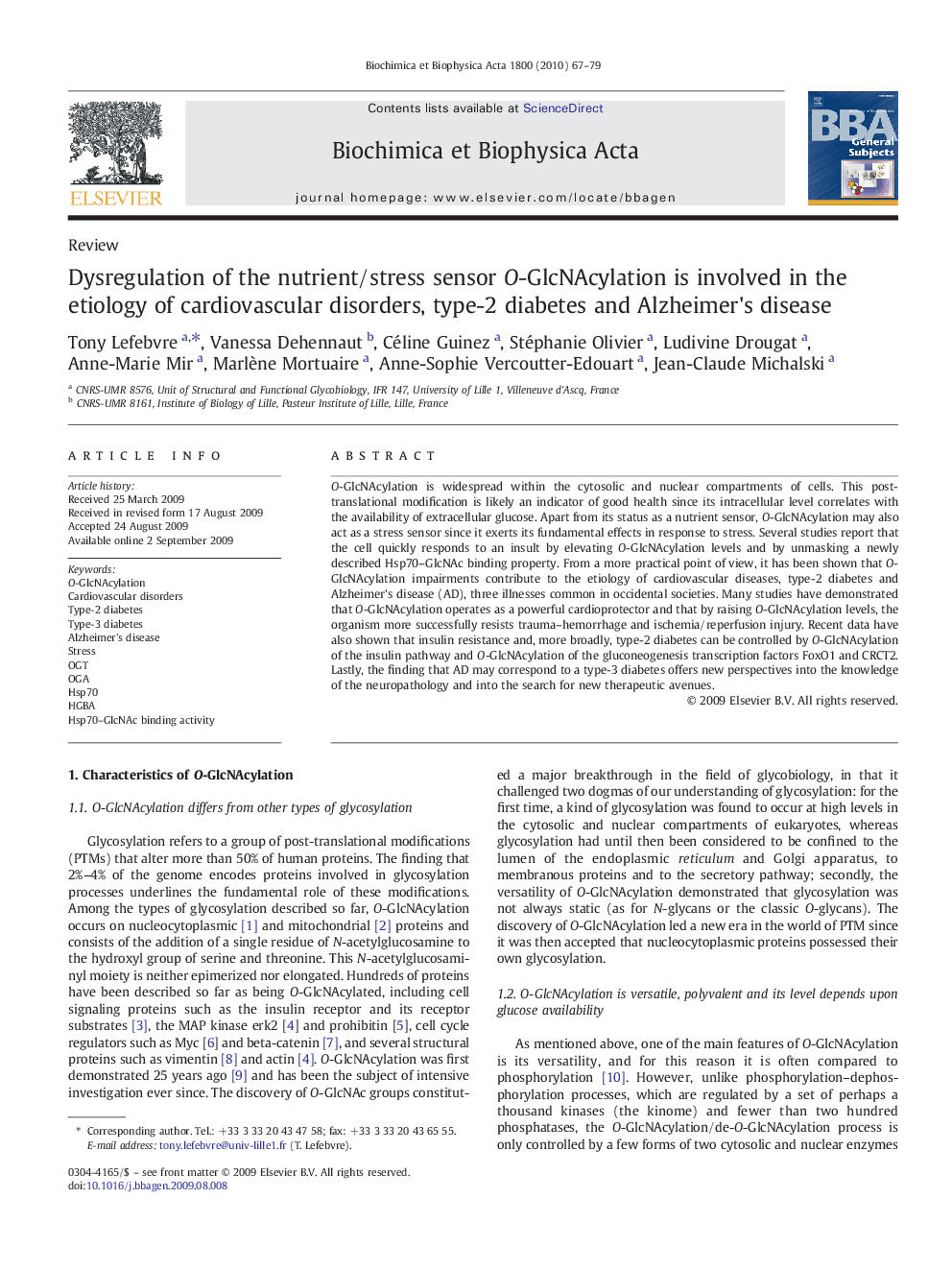| Article ID | Journal | Published Year | Pages | File Type |
|---|---|---|---|---|
| 1948024 | Biochimica et Biophysica Acta (BBA) - General Subjects | 2010 | 13 Pages |
O-GlcNAcylation is widespread within the cytosolic and nuclear compartments of cells. This post-translational modification is likely an indicator of good health since its intracellular level correlates with the availability of extracellular glucose. Apart from its status as a nutrient sensor, O-GlcNAcylation may also act as a stress sensor since it exerts its fundamental effects in response to stress. Several studies report that the cell quickly responds to an insult by elevating O-GlcNAcylation levels and by unmasking a newly described Hsp70–GlcNAc binding property. From a more practical point of view, it has been shown that O-GlcNAcylation impairments contribute to the etiology of cardiovascular diseases, type-2 diabetes and Alzheimer's disease (AD), three illnesses common in occidental societies. Many studies have demonstrated that O-GlcNAcylation operates as a powerful cardioprotector and that by raising O-GlcNAcylation levels, the organism more successfully resists trauma–hemorrhage and ischemia/reperfusion injury. Recent data have also shown that insulin resistance and, more broadly, type-2 diabetes can be controlled by O-GlcNAcylation of the insulin pathway and O-GlcNAcylation of the gluconeogenesis transcription factors FoxO1 and CRCT2. Lastly, the finding that AD may correspond to a type-3 diabetes offers new perspectives into the knowledge of the neuropathology and into the search for new therapeutic avenues.
